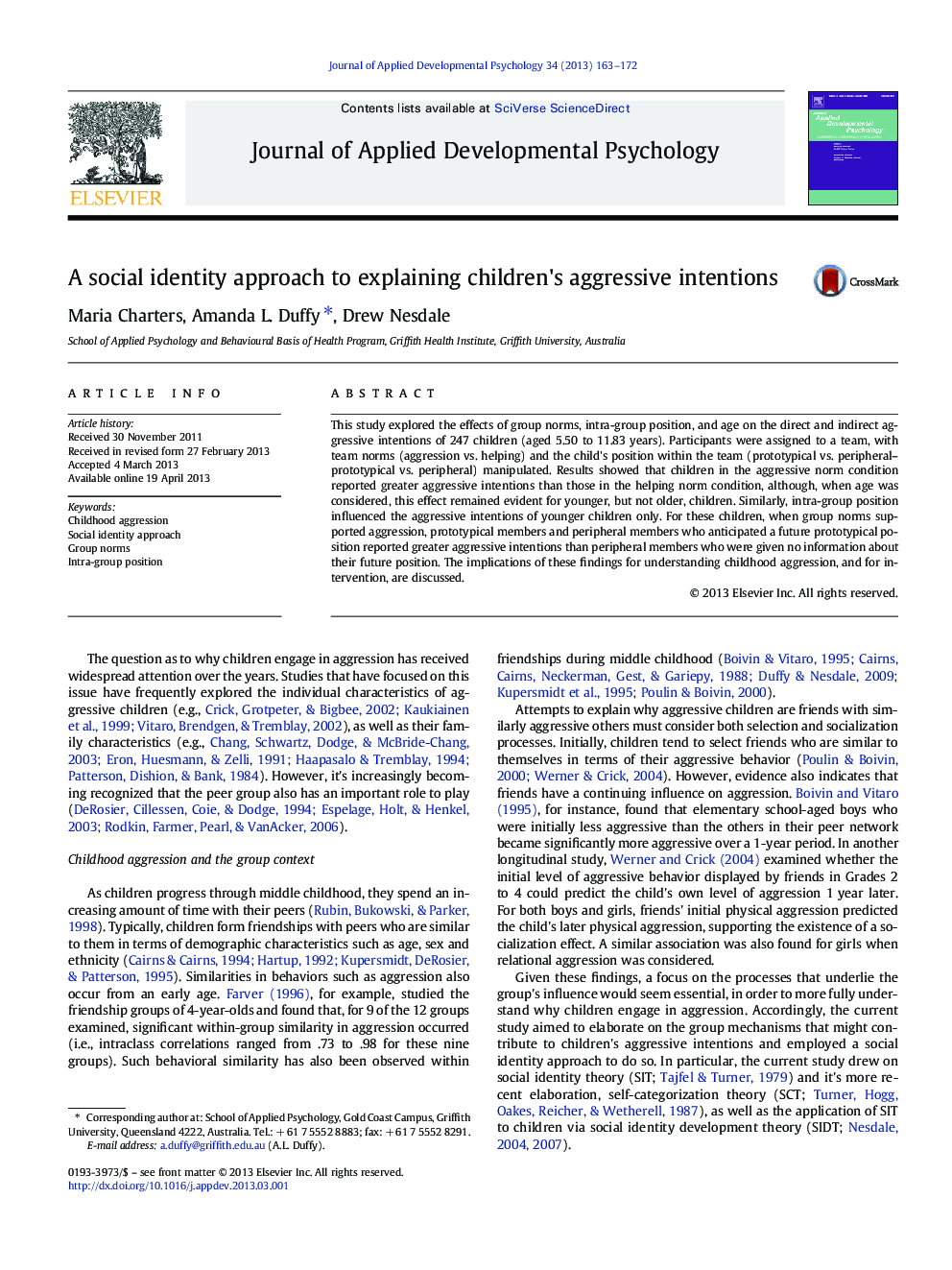| Article ID | Journal | Published Year | Pages | File Type |
|---|---|---|---|---|
| 359662 | Journal of Applied Developmental Psychology | 2013 | 10 Pages |
•Children's direct and indirect aggressive intentions were examined.•More direct than indirect aggressive intentions were reported.•Younger children reported more aggressive intentions than older children.•Aggressive intentions were higher in teams with aggressive norms than helping norms.•Intra-group position also influenced the aggressive intentions of younger children.
This study explored the effects of group norms, intra-group position, and age on the direct and indirect aggressive intentions of 247 children (aged 5.50 to 11.83 years). Participants were assigned to a team, with team norms (aggression vs. helping) and the child's position within the team (prototypical vs. peripheral–prototypical vs. peripheral) manipulated. Results showed that children in the aggressive norm condition reported greater aggressive intentions than those in the helping norm condition, although, when age was considered, this effect remained evident for younger, but not older, children. Similarly, intra-group position influenced the aggressive intentions of younger children only. For these children, when group norms supported aggression, prototypical members and peripheral members who anticipated a future prototypical position reported greater aggressive intentions than peripheral members who were given no information about their future position. The implications of these findings for understanding childhood aggression, and for intervention, are discussed.
